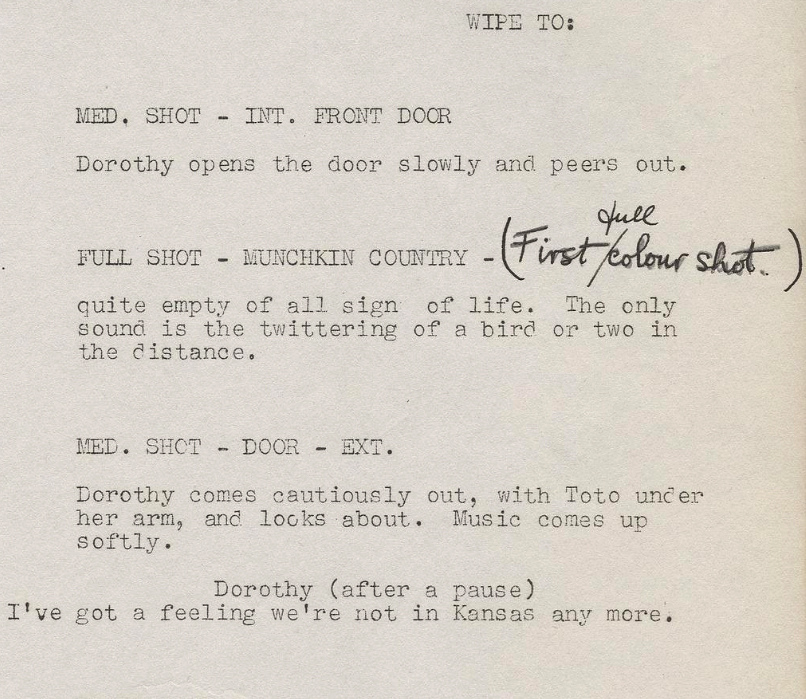
A very “Happy New Year” to everyone in our community from the team at Designing Sound!
We’re starting off the year with something we don’t often associate with sound design. I’m going to assume you’ve seen The Wizard of Oz before. Recall that scene described in the script above, and remember everything that came before it. Picture the sudden burst of color when you get your first glimpse of Munchkin Land. There’s only one line of dialog in that script above, and it’s perfect level of understatement really drives home the impact of the film’s sudden shift. To quote that all important reminder, “Dialog is King.”
More than any other element (in most films/TV/games, at least) dialog carries and drives the story. Even if it doesn’t, the viewer is going to listen to and try to understand any dialog that enters their acoustic space…it’s just human nature. This month we’re going to look at the important work that goes into making dialog work.
Remember, we always encourage guest posts (both on and off-topic). If you’ve got something you’d like to share with the community, contact shaun [at] designingsound (dot) org. If you’re the kind of person who likes to plan ahead, we’re going to focus on animal recording and design in February.
I think this would be a great time for a Ren Klyce Interview…. the dialog in almost all of his films is so amazingly constructed that it is truly sound design.
Anytime is a good time for a Ren Klyce interview, Charles! He tends to be pretty busy though, and my month is already hell. We’ll see what we can swing.
Interesting topic!
The voice is usually treated as one of the obvious aspects of film sound. But behind that facade of simplicity lies a complex beast with amazing story-telling potential.
“By what incomprehensible thoughtlessness can we, in considering what after all is called the talking picture, “forget” the voice? Because we confuse it with speech. From the speech act we usually retain only the significations it bears, forgetting the medium of the voice itself.”
– Chion, Michel, “The Voice in Cinema”, translated by Claudia Gorbman, Columbia University Press, New York, 1999, prologue.
I don’t always have the time to read through all your great posts, but I will take as much time as possible to read as much as possible from this month’s topic. As a production sound mixer and boom operator for scripted TV and Film as well as Documentary, Multimedia and Commercial productions, I agree that dialogue is definitely king. We often go to great extremes to achieve the best possible dialogue recordings under ridiculous circumstances brought on by everything from noisy locations to difficult wardrobe and near impossible camera setups. Every day on set is a new experience to some degree and every new technique to create a recording that perfectly marries so many beautiful visual queues captured by our camera crews is greatly appreciated. My dream at the beginning of this quest for film sound almost twenty years ago started with a hope to become a great sound designer/ re-recording mixer, and now as a working location sound mixer (still holding onto my original dream) my hope is to learn more effectively how to capture for our post teams the best possible foundation to help them create their sonic gems. We are all in this together. I’m excited to read and learn this month.
Thank you,
E. Santiago